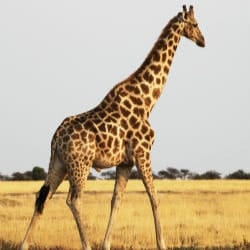Giraffe’s Are Now Vulnerable To Extinction

Over the last 3 decades there has been a dramatic drop in the number of wild giraffes. The drop has been so precipitous that the world’s tallest land mammal is now being classified as vulnerable to extinction. To get a sense of how grave the situation is, in 1985 there were approximately 155,000 wild giraffes. That number has fallen to 97,000 in 2015 says the International Union for the Conservation of Nature. The reasons behind the drop are poaching, habitat loss and civil war in parts of the African continent.
A change in status
Until recently the IUCN had considered the status of giraffes as “least concern” however, in its latest Red List of threatened species the organisation reclassified the species as “vulnerable” which means that in over three generations the population of the species has fallen by more than 30%. Dr Julian Fennessy who is part of the giraffe specialist group at the IUCN says that we are witnessing a “silent extinction” of the species.
“If you go on a safari, giraffes are everywhere. While there have been great concern about elephants and rhinos, giraffes have gone under the radar but, unfortunately, their numbers have been plummeting, and this is something that we were a little shocked about, that they have declined by so much in so little time.”
Human encroachment
The growth in human populations has meant that more land is now used for farming or other types of development. This means that the giraffe’s range has become extremely fragmented in large parts of Africa. Civil unrest has also had a major impact on giraffe numbers. Dr Fennessy adds that in war torn areas giraffes are basically war fodder. It is basically a large animal that can feed a lot of people
Solutions exist
It is believed by researchers that local populations of giraffes may not make it, however they are also optimistic about the species long term future which they think can be secured. For example, giraffe numbers in Southern Africa have been kept high and that success boils down to how the game parks are managed for tourists. Experts also believe the additional attention resulting from the IUCN listing will benefit the species.
Take the right conservation steps
Chris Ransom of the Zoological Society of London says a good example is South Africa which has managed wildlife where lots of animals are moving between different conservation areas. The situation in the rest of Africa however is very different. Mr Ransom says he believes giraffes will be able to survive provided the right conservation steps are taken. The most recent edition of the IUCN Red List now contains 85,000 species of which 24,000 are at risk of extinction.



